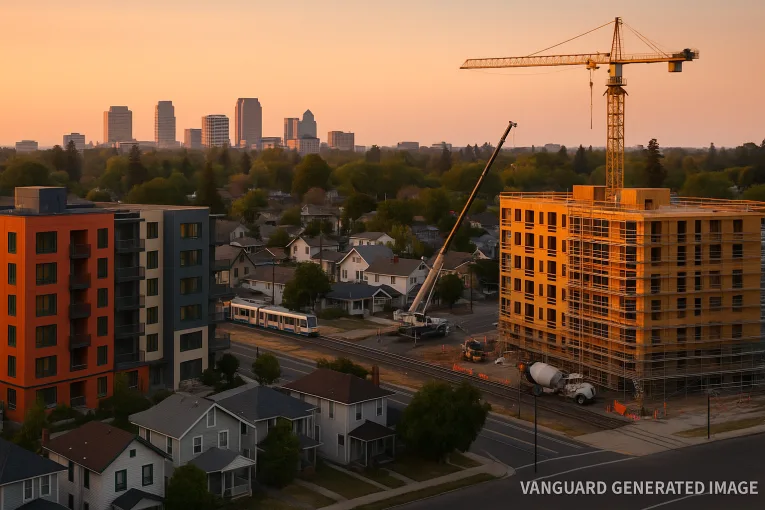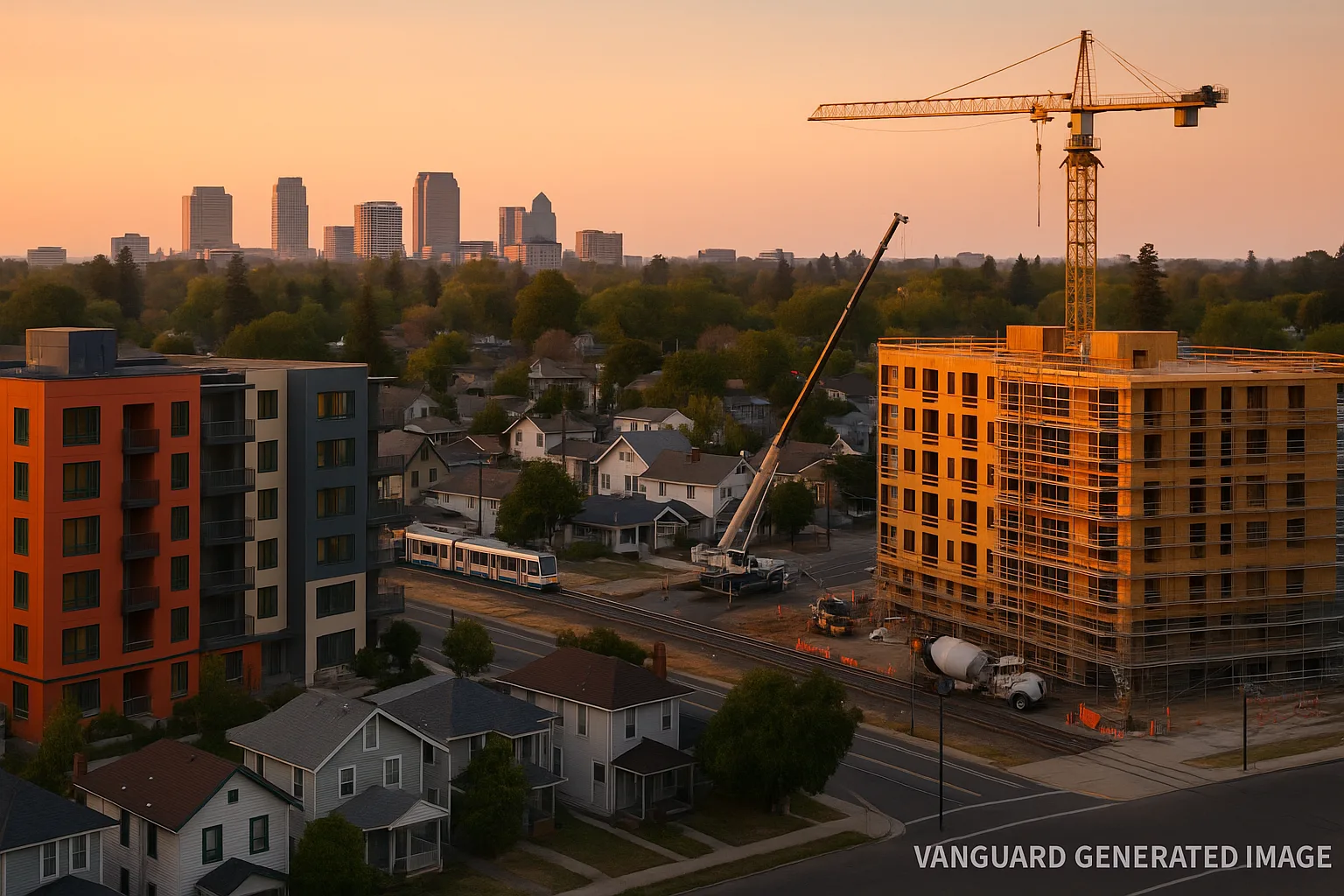
California has quietly undergone a fundamental shift in housing policy over the past five years, as the state has rewritten its laws to finally favor housing production.
California’s housing story right now isn’t one big ribbon-cutting—it’s a steady drumbeat of modest filings, strategic redesigns, and the occasional breakthrough.
The latest filings in Sacramento and Oakland show exactly that: a pipeline that’s getting more varied with ADUs, modular projects, and mixed-use infill while the rules of the game have finally shifted toward building rather than blocking.
A quiet revolution is happening beneath the noise of housing politics.
Despite ongoing frustration over affordability, NIMBY resistance, and high construction costs, California has quietly undergone a fundamental shift in housing policy over the past five years, as the state has rewritten its laws to finally favor housing production.
At the heart of this transformation is CEQA reform, which now exempts most urban infill housing from lengthy environmental review and flips the default from “prove you can build” to “prove why you can’t.” For the first time in decades, California’s development politics operate under a presumption of yes rather than no—a profound cultural shift in how the state approaches growth.
The effects are visible in Sacramento, where the housing pipeline has begun to unclog.
One filing on Rio Linda Boulevard would replace a long-empty lot with 30 homes, a three-story apartment building, and a small two-story structure with a manager’s unit and play area.
It’s not glamorous, but it’s exactly the sort of neighborhood infill that used to sit in bureaucratic purgatory.
Another project on T Street proposes 33 income-restricted apartments—transforming a parking lot into a six-story affordable building. And on 16th Street, a modular project adds 41 small studio apartments near light rail and retail.
These may be small by themselves, but together they represent the city’s new rhythm of housing production.
Oakland’s story offers a different scale but the same spirit. A newly opened six-story complex there delivers 235 affordable apartments over 18,000 square feet of ground-floor retail. Built with modular units fabricated in Vallejo, it demonstrates what happens when financing and construction innovation align.
When political will, subsidy, and industrial efficiency all point in the same direction, even the Bay Area’s thorniest projects can cross the finish line.
Across California’s backyards, the same trend is unfolding—accessory dwelling units like one modest 654-square-foot home in San Francisco may seem small, but these ADUs now make up nearly one-fifth of all new housing statewide, quietly rebuilding the missing middle one lot at a time.
All of these examples underscore a larger point: the machinery of California’s housing policy is finally working in the direction of production, stripping away the red tape that once defined the process. With CEQA reform, SB 423’s continued streamlining, Prohousing incentives, and an empowered HCD that now enforces rather than merely reviews, the state has turned housing oversight into a system with real authority.
This is where Governor Gavin Newsom deserves more credit than he often gets, having largely delivered on his promises to reform CEQA and champion transit-oriented development through both legislative action and sustained pressure on local governments.
He said he would revamp HCD into a real enforcement body, and it’s now one of the most consequential housing agencies in the country.
Results may take time to materialize, and the governor’s critics will fairly point out that prices remain sky-high, but structurally he has accomplished more on housing reform than any of his predecessors.
The Builder’s Remedy debate underscores how misunderstood this new housing era is.
On social media and neighborhood forums, you’ll often see people calling the Builder’s Remedy “frightening” or “irresponsible.”
But that’s missing the point entirely.
The Builder’s Remedy isn’t the disease but the symptom—triggered only when a city fails to adopt a state-compliant Housing Element, meaning that if a city plans adequately for housing, it never comes into play.
What the critics miss is that the Builder’s Remedy is a form of accountability.
It exists because too many California cities have refused to plan for housing, serving not as a loophole but as the state’s enforcement tool that strips noncompliant cities of their ability to deny qualifying projects—the message is simple: plan for housing or lose control over it.
If Davis again becomes subject to the Builder’s Remedy, it wouldn’t be because of reckless developers—it would be because of our own failure to plan and build.
For decades, Davis has underproduced housing, particularly affordable housing, while prices have soared. The result has been exclusionary: families, teachers, and students priced out, while long-time homeowners watch property values climb.
The “devastatingly transformative effect” isn’t coming from new construction—it’s already here, in the form of economic displacement, social stratification, and an aging, unaffordable housing stock.
The real civic irresponsibility isn’t a developer using the Builder’s Remedy; it’s a community that fails to meet its own housing needs and then blames the state for stepping in. Local control is a privilege, not a guarantee.
When cities misuse it to obstruct growth, state law now intervenes to ensure that housing gets built. That’s not tyranny—it’s accountability for a crisis decades in the making.
The economics, of course, remain brutal. California permitted about 102,000 homes in 2024—down from the prior year—with the steepest drop in multi-unit construction. High interest rates, labor costs, and tight credit continue to suppress what the new laws are meant to unleash.
You can streamline a permit, but you can’t streamline a balance sheet. Financing remains the biggest constraint on production, especially for mixed-income and unsubsidized apartments.
This is progress—measured, not miraculous.
Progress looks like a vacant acre turning into apartments without a years-long legal fight, modular buildings adapting to market realities instead of being shelved, and cities saying yes to density near transit rather than pushing growth to the outskirts—a quiet evolution from paralysis to motion.
California’s housing revolution won’t arrive with a single groundbreaking or a viral press conference. It’s arriving now, quietly, through the daily grind of planners, architects, and city staff who finally have state policy at their back instead of in their way.
For the first time in decades, the gears are aligned—law, process, and political will pulling in the same direction.
If interest rates ease and construction costs stabilize while CEQA reform and HCD enforcement continue to gain traction, the next twelve months could look meaningfully different from the last twelve.
Until then, we can take some satisfaction in the fact that progress—real progress—isn’t just promised. It’s finally permitted.
Follow the Vanguard on Social Media – X, Instagram and Facebook. Subscribe the Vanguard News letters. To make a tax-deductible donation, please visit davisvanguard.org/donate or give directly through ActBlue. Your support will ensure that the vital work of the Vanguard continues.
Categories: Breaking News City of Davis Housing Land Use/Open Space Opinion State of California Tags: Affordable Housing Builder’s Remedy california housing CEQA Reform Davis housing Gavin Newsom HCD Enforcement Housing Crisis housing policy Sacramento development State Housing Law Transit-oriented housing urban infill Yimby

